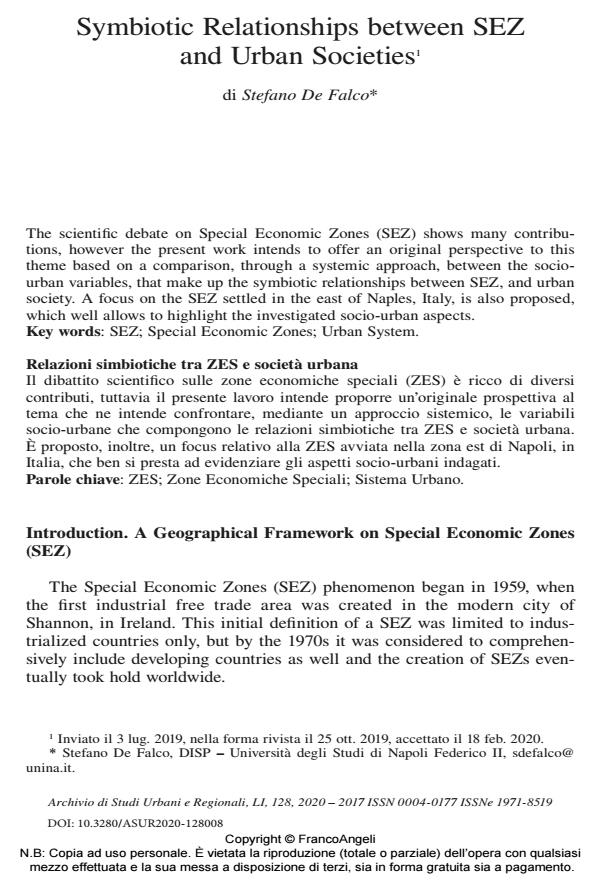Symbiotic Relationships between SEZ and Urban Societies
Journal title ARCHIVIO DI STUDI URBANI E REGIONALI
Author/s Stefano De Falco
Publishing Year 2020 Issue 2020/128
Language English Pages 20 P. 132-151 File size 212 KB
DOI 10.3280/ASUR2020-128008
DOI is like a bar code for intellectual property: to have more infomation
click here
Below, you can see the article first page
If you want to buy this article in PDF format, you can do it, following the instructions to buy download credits

FrancoAngeli is member of Publishers International Linking Association, Inc (PILA), a not-for-profit association which run the CrossRef service enabling links to and from online scholarly content.
The scientific debate on Special Economic Zones (SEZ) shows many contributions, however the present work intends to offer an original perspective to this theme based on a comparison, through a systemic approach, between the sociourban variables, that make up the symbiotic relationships between SEZ, and urban society. A focus on the SEZ settled in the east of Naples, Italy, is also proposed, which well allows to highlight the investigated socio-urban aspects.
Keywords: SEZ; Special Economic Zones; Urban System.
Stefano De Falco, Symbiotic Relationships between SEZ and Urban Societies in "ARCHIVIO DI STUDI URBANI E REGIONALI" 128/2020, pp 132-151, DOI: 10.3280/ASUR2020-128008